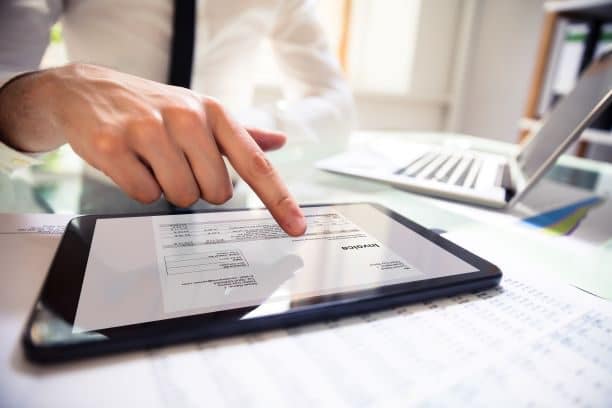La digital transformation is sweeping across all business functions. The purchasing function is no exception. Digital technology is being used at every stage of the purchasing life cycle. Automated processes ensure that transactions run more smoothly, reducing processing times and costs, and minimising risks. Another advantage is that data consolidation increases visibility and improves spending control. Denis Mohlo*, an expert in management and information systems, outlines the roadmap for successfully completing this strategic transformation.

Digitising purchasing, also known as the "spend" process, is an essential and effective way of improving a company's economic, logistical and technological performance. This is all the more true given that purchasing accounts for an average of 60 % of the costs of medium-sized businesses.
The regulatory context is forcing a review of invoicing circuits, with a view to the widespread use of electronic invoicing and more reliable VAT returns. Companies must take advantage of this obligation to rethink their purchasing processes as a whole. But that's not all. This process also concerns relations with suppliers, as well as the management and automation of back office operations, such as order processing, banking and accounting, etc.
Properly integrated information systems are invaluable in this respect. The aim of this article is to help you build an overall project for successful digitalisation.
1. A broad scope of intervention
The digital transformation of purchasing is taking place over a much wider area than might first appear. The "spend" process actually comprises two main components of the purchasing life cycle:
- the source-to-contract which, upstream of purchasing, focuses on identifying suppliers and managing contracts
- the procure-to-paydownstream, refers to the purchasing process itself, from the purchase request to the payment of suppliers.
The process source-to-contract (S2C) covers a wide range of operations: expressing needs, 'make or buy' arbitration (the choice between bringing a product or service in-house or outsourcing it), identifying and choosing suppliers (sourcing, invitations to tender), managing quotations and contracts, negotiating prices, and so on.
The process purchase-to-pay (P2P or procure-to-pay) includes the following operations: product search, ordering, logistics management (tracking and receipt of goods, etc.), analysis of goods conformity, invoicing, accounting and settlement.
The scope of expenditure is also very broad, covering items as diverse as subcontracting, technological investment, raw materials, IT services and logistics.
Managing this diversity and the multiple levers for action associated with it requires a cross-functional approach aimed at coordinating the resources allocated to the various activities, according to the objectives to be achieved. What's the point of negotiating low prices if the supplier's logistics performance isn't up to scratch? Why invest in high-tech software if there is no training in how to use it?
Implementing a procurement digitisation project therefore involves, first and foremost, a strategic review of the company's resource management policy. This reflection will focus on the choice of information system and associated tools.
2. Binding regulatory provisions
The current discourse on the digital transformation of purchasing is often restricted to the electronic invoicing suppliers and therefore to the savings resulting from the disappearance of paper circuits planned by the State from July 2024. As a reminder, since 1er From 1 January 2020, businesses must send their invoices to the public sector in electronic format. The 2020 Finance Act and the Order of 15 September 2021 will then define the legal framework for the widespread use of electronic invoicing for all transactions between companies established in France and subject to VAT.
Within this legal framework, the government has introduced a system for checking invoices before payment, known as clearing, in order to make VAT returns more reliable. To meet their obligations, businesses now have a choice of :
- the portal public billing which is based on the Chorus Pro platform, which already handles the electronic exchange of public sector invoices. This gives rise to the issue of a standardised VAT report. Electronic invoices can only be paid to suppliers after this clearing. In order to be entered on this public portal, invoices must be drawn up in XML-type "structured" data format.
- from certified private platformsIf necessary, these systems, operated by trusted third parties, will be able to bridge the gap between unstructured invoices and invoices structured in XML so that they can be entered into the public platform. Basically, this is similar to the Chorus system, which processes invoices for the public sector. Invoices are formatted in the same way as the Chorus system, which processes invoices for the public sector. quarantine (SIREN, RCS, amounts excluding VAT, etc.). In addition to VAT controls, it facilitates the interoperability of invoices, which can be read by the various parties involved (internal or external to the company, logistics, accounting, tax departments, partner companies, etc.).
3. Multiple challenges requiring broader management
Implementing the strict regulatory provisions on electronic invoicing set out above means that the processes and data involved will have to be upgraded.
It would also be a shame not to extend the scope of the project to the management needs identified in the strategic analysis mentioned above. For example, significant gains in cash flow can be achieved through better control of payment times and therefore of working capital requirements (WCR).
There is often a need to improve the reliability of the cost accounting system for purchasing in order to improve cost control. The challenges of reducing invoice processing costs, often in the order of 70 to 80 %, over and above the savings on paper handling, concern the control and automation workflows, approval, posting, payment, archiving of invoices, etc.
In summary, there are three main areas for progress:
- Consistent and effective relations with suppliers
The number of connections between the company's various departments and suppliers is considerable, whether in terms of orders, quotes, payments, after-sales, delivery times, etc. A standardised and maintained supplier data dictionary is therefore essential for rigorous relationship management. A standardised and maintained supplier data dictionary is essential for rigorous relationship management.
- Controlling back office costs
This point has already been mentioned in relation to the gains in efficiency associated with the disappearance of paper circuits and the structuring of data formats based on appropriate languages, such as XML, which will make it possible to comply with both regulatory requirements and the specific management needs of each company.
- Managing the risks inherent in the purchasing process
Here again, traditional risks such as non-compliant deliveries, supplier failure or failure to meet deadlines can be reduced by defining the data (see above, data dictionary).
4. A global project to transform the company
The working sequence should be as follows, based on a clear strategic vision:
- First work on the target processes and highlight the roles and rules;
- Then define the necessary data to be recorded in a data repository dictionary.
- Finally, we need to specify the architecture of the many tools that will be impacted (ERP, OCR, cash management, etc.). So the choice of tools comes last.


